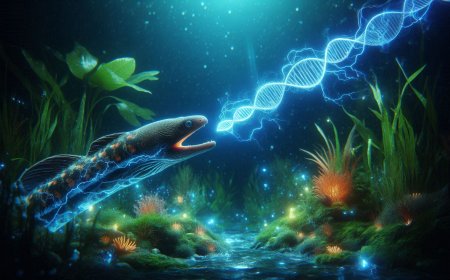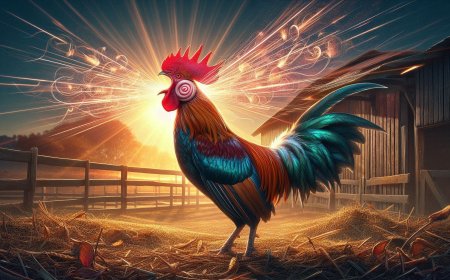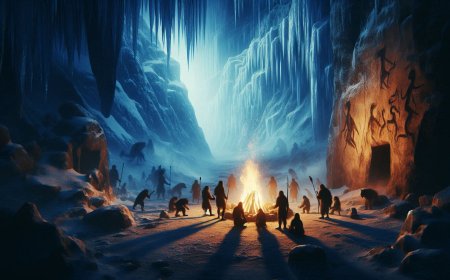The Breath Beneath the Ice
Discover the fascinating world beneath the ice in winter ponds, where turtles like the eastern painted turtle survive through cloacal respiration. This unique adaptation allows them to breathe underwater, remaining motionless in the cold mud while the world above falls silent. Learn about their remarkable survival mechanisms and the importance of conserving their habitats.

In the stillness of winter, when ponds and lakes freeze over and the world above falls silent, life below the surface continues in ways both mysterious and wondrous. Beneath a thick layer of ice, in the cold, murky depths of a pond, a turtle remains motionless, nestled into the mud. Its heart beats slowly, its body is cold, and yet, it lives. It breathes, though not in any way that most creatures do. This is the story of the turtle, a creature that can, quite incredibly, breathe through its butt.
Few know the hidden talents of the turtle. To the untrained eye, they seem like quiet wanderers of the water’s edge, basking in the sun or drifting lazily through the shallows. But when winter comes and the air grows sharp with frost, these aquatic reptiles retreat to a realm beneath the ice, where sunlight fades and the surface air becomes unreachable. This is where the magic happens.
Unlike most animals that rely solely on their lungs, certain turtles—like the Australian Fitzroy River turtle and the North American eastern painted turtle—have evolved a remarkable survival mechanism: cloacal respiration, also known as butt breathing. This bizarre but brilliant adaptation allows them to remain submerged for months on end, breathing through their cloaca, a multipurpose orifice near their tail.
But how does it work? Imagine a pair of specialized sacs, cloacal bursae, nestled within the turtle’s cloaca. These sacs, rich with blood vessels, act as the gateway to a new kind of respiration. As the turtle rests in the cold water, the bursae absorb dissolved oxygen directly from the surrounding water, much like lungs do from the air. Slowly, methodically, the turtle pulls in oxygen through its cloaca, enough to keep it alive during the long, icy sleep of winter.
For these turtles, this ability is more than a quirky biological fact—it’s a lifeline. When ponds freeze and the water’s surface becomes a barrier to the outside world, many animals would struggle to survive. Without cloacal respiration, the turtle would need to periodically rise to the surface for air, a risky and often impossible task when trapped beneath layers of ice. But with this unique adaptation, they can rest safely, avoiding the dangers of predators and the bitter cold above.
In the heart of this frozen underwater world, where most life slows to a crawl, the turtle’s body enters a state known as brumation, a type of dormancy akin to hibernation. Its metabolism slows down drastically, and so does its need for oxygen. The turtle drifts into a state of suspended animation, breathing only as much as it needs to survive the long winter months. Here, time itself seems to slow, as the creature waits for the first warm rays of spring to melt away the ice.
When the thaw finally comes and the world awakens, the turtle will stir from its brumation, rising once more to the surface. It will stretch its legs, blink in the sunlight, and return to its familiar routine, basking on rocks and foraging in shallow waters. And though it may seem like just another turtle, its quiet winter miracle—its ability to breathe through its cloaca—remains an invisible but vital part of its survival.
In a world where survival often comes down to the smallest adaptations, cloacal respiration is a testament to the marvels of evolution. This peculiar breathing method, while strange to us, allows certain turtle species to carve out a niche in cold, aquatic environments where few other creatures can thrive. The ability to stay submerged for extended periods, relying on the water itself for oxygen, grants them access to habitats that would otherwise be off-limits.
But this incredible ability is not without its challenges. The turtles’ habitats are increasingly under threat from pollution, habitat destruction, and climate change. Understanding their unique adaptations—like cloacal respiration—provides crucial insights into how best to protect them. Conserving their watery homes ensures that these remarkable creatures can continue to perform their winter magic beneath the ice for generations to come.
So the next time you see a turtle basking on a sunny riverbank, remember: it’s not just a creature of the land and surface waters. It’s a survivor of the deep, one that breathes in ways we can barely imagine, thriving in the stillness of winter’s cold grasp. And somewhere beneath the ice, another turtle rests, its breath slow and silent, waiting for spring to return.
What's Your Reaction?









































































































